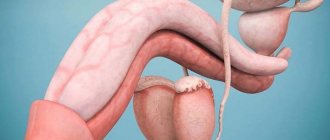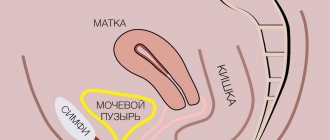Types of aneuploidy
Autosomal
Changes in the number of autosomes occur in different pairs of chromosomes. Most often, trisomy occurs in the following pairs of chromosomes, that is, situations where instead of two chromosomes there are three. Trisomy 21 is Down syndrome, trisomy 18 is Edwards syndrome, and trisomy 13 is Patau syndrome. These types of chromosomal pathologies can be combined with the birth of a live fetus, but with multiple severe malformations, and trisomy 18 and 13 are characterized by very poor survival of such children, and trisomy 21, despite the developmental defects, allows a person to live for a fairly long time. Information on the main trisomies is available in the relevant articles on our website.
In general, there are much more aneuploidies on autosomes - they can also occur on other pairs of chromosomes; tetrasomies or combinations of trisomies on several pairs at the same time are much less common, but all of them are fatal, and spontaneous abortion occurs even in the very early stages of pregnancy.
Additional X and Y chromosomes on pair 23
Additional chromosomes on the 23rd pair or additional sex chromosomes form characteristic clinical signs, however, in terms of the degree of their manifestations, additional sex chromosomes are accompanied by much milder defects. At the same time, although very rarely, tetra-, penta- and a larger number of chromosomes can occur, which leads to increased severity of developmental defects.
Below we will discuss the most common variants of additional Y and X chromosomes.
XXY syndrome - Klinefelter's syndrome
In addition to this classic variant, there are other rarer combinations with an increase in X and Y chromosomes.
This syndrome of aneuploidy on sex chromosomes is characterized by a violation of the development of the male body towards its feminization, that is, with a predominance of female traits. The important thing is that before the onset of puberty, in some cases it may not be recognized at all; it can only be suspected based on a number of indirect signs.
After puberty, the manifestations become characteristic - high growth, with a female body type with a wide pelvis and narrow shoulders. The voice can remain virtually unchanged - it does not mutate, does not become male. Characteristic is underdevelopment of the external genitalia and erectile dysfunction. In this case, female-type hair growth is noted. There is a lower level of libido in such men, and infertility very often occurs due to impaired sperm development. There may be some lag in the intellectual sphere.
XYU syndrome - “super man” syndrome
Despite the name, such people do not have any superpowers, nor do they have excessive aggression or excessive potential in the intimate sphere.
The main features are shorter stature and earlier onset of puberty. Masculinization occurs earlier than among peers; excess hair growth and earlier baldness are more common. In the intellectual sphere, there is a slight lag behind the population, but this is due to the fact that such children from early childhood have increased distractibility, lability of attention, restlessness, they have a harder time learning material, and it is from school that this lag is observed. There may be a slight decrease in fertility. Although the vast majority of patients with XYU syndrome are not detected clinically, but through various genetic tests, that is, “in passing”
XXX syndrome - “superwoman” syndrome
Similar to the previous one, it can be an “accidental finding” during genetic research, and has minimal external manifestations.
The most pronounced is a slight decrease in the ability to bear children, due to a higher percentage of spontaneous abortions; minimal manifestations in the reproductive and intellectual spheres may be observed.
Additional Y and X chromosomes with minimal manifestations
In this case we are talking about the so-called “mosaicism”. This is a phenomenon when a certain part of the cells of the body contains some variant of aneuploidy, and the remaining cells are described by a normal chromosomal formula. This situation occurs if the chromosomal mutation did not occur during fertilization of the egg, but in the early stages of zygote division. The later this happens, the smaller the proportion of cells that have karyotype abnormalities and the fewer clinical manifestations. Very often, such mosaicism is discovered only through genetic studies.
Changes in chromosome structure
Violations of the chromosomal structure are possible - deletions (loss of a chromosome section), duplication (repetition of a certain chromosome section), inversion (rotation of a chromosome section by 180°) and translocation (movement of chromosome sections to a new position). A connection has been established between male infertility and deletions occurring on the Y chromosome with a normal karyotype of 46, xy. Even the presence of microdeletions on the Y chromosome is accompanied by various disorders of spermatogenesis.
If there are structural abnormalities of the chromosome, then the karyotype indicates: p short arm of the chromosome, q - long arm, t - translocation. For example, with a deletion of the short arm of chromosome 5, the female karyotype will look like this: 46, xx, 5p- (cry-of-the-cat syndrome). The mother of a child with Down syndrome caused by a translocation of chromosome 14/21 will have a karyotype of 45, XX, t (14q; 21q). The altered chromosome is formed by the fusion of the long arms of chromosomes 14 and 21, and the short arms are lost. In any case, upon receiving the analysis, you must contact a geneticist who will explain in detail the meaning of the results if there are deviations in them. If a problem is identified in one of the parents, the geneticist makes a conclusion about the risk of the child inheriting a particular disease or developmental defect. If pregnancy is possible, then a study of the fetal karyotype is still carried out, because not all malformations can be diagnosed by ultrasound, especially since this is possible at a later date. Determination of the fetal karyotype in chorion cells makes it possible for early diagnosis of hereditary pathology. If a fetal malformation is detected that is incompatible with life, the pregnancy is terminated in the early stages. In later stages of pregnancy, amniotic fluid and fetal skin cells are examined, which are obtained through amnio- and cordocentesis.
Diagnosis of various types of aneuploidy.
The only reliable way for early intrauterine diagnosis of chromosomal abnormalities in the fetus is genetic research. Confirmation of a diagnosis suspected on the basis of risks identified during screening is carried out with invasive sampling of material, which requires clearly substantiated indications for the procedure.
Using the non-invasive prenatal test Prenetix, you can examine fetal DNA in the venous blood of the expectant mother starting from the 10th week of pregnancy. The reliability and specificity of the method allows us to classify Prenetix as an expert-level screening, which significantly increases the information content of traditional first trimester screening.
Normal set of chromosomes
It is known that the likelihood of miscarriage is much higher if the parents have chromosomal abnormalities. Therefore, this examination of spouses is used for recurrent miscarriage and infertility. Genetic testing helps not only to determine the cause of infertility, but also to predict the possibility of having children with chromosomal abnormalities. Therefore, great importance is attached to prenatal diagnosis of chromosomal aberrations.
A karyotype is a complete set of cell chromosomes, normally 46 chromosomes: 22 pairs of autosomes and two sex chromosomes. Women have XX chromosomes and men have XY chromosomes. Each chromosome carries genes responsible for heredity. Karyotype 46, xx is a normal female karyotype, karyotype 46, xy corresponds to a normal male karyotype. Therefore, if a married couple received the answer - a normal karyotype 46, xx and a karyotype 46, xy, then there is no reason to worry. The karyotype does not change throughout life.
Fetal karyotyping
Fetal karyotyping is performed if a congenital pathology is suspected. In Down syndrome, for example, there is an additional 21 chromosome, so the karyotype of a girl will be described as 47,XX 21+, and a boy 47,XY 21+. Klinefelter syndrome occurs in 1 in 500 newborn boys, with this disease the number of X chromosomes increases - karyotype 47,XXY, and with a greater increase in the number of X chromosomes 48,XXXY and 49,XXXXY, the child will have intellectual impairment, so the question of termination of pregnancy is raised . The karyotype for Shereshevsky-Turner syndrome will be described as follows: 45X0 - loss of one X chromosome. Pre-implantation genetic diagnosis is mandatory during IVF, which makes it possible to detect serious deviations in the number of chromosomes.
The most important and interesting news about infertility treatment and IVF is now in our Telegram channel @probirka_forum Join us!
genetics, karyotyping
X chromosome and dosage compensation system
In many animals, including mammals, and even some plants, males inherit one X chromosome, and females inherit two. In order for the genes of the X chromosomes in individuals of different sexes to be expressed in equal quantities, if there are two X chromosomes in a cell, one “turns off” and its genes do not work. This process is called inactivation of the X chromosome, and the way special molecules “turn off” the chromosome is called the dosage compensation system.
The “switching off” of one of the two X chromosomes in mammals involves a long non-coding RNA called Xist (from the English X-inactive specific transcript, literally “X-inactive specific transcript”) - a ribonucleic acid molecule of as many as 17 thousand nucleotide residues. Several characteristic sections—domains—can be distinguished in the molecule [3–6], [14].
Gradually, RNA, which was initially considered only a messenger molecule on the way to implementing the genetic program of the cell, is discovering more and more new functions. “Biomolecule” has already written about many of them: “About all RNA in the world, large and small” [20], “RNA at the origins of life?” [21], “Big Deeds of Small Molecules: How Small RNAs Orchestrate Bacterial Genes” [22], “Proteins versus RNA - Who Was the First to Invent Splicing?” [23], “How to get rid of RNA in a few minutes” [24]. - Ed.
Spreading along the chromosome, this RNA interacts with one of its domains with a protein complex called PRC2 (Polycomb repressive complex 2), “dragging” it to the places where genes need to be turned off. The complex, in turn, modifies histones in a special way: it attaches methyl groups to them in certain places. DNA wound around such histones is inactive, and the genes of the “switched off” X chromosome are not read (Fig. 2) [7–10], [15].
Figure 2. Xist turns off genes by recruiting the histone-modifying protein complex PRC2
Mitchell Guttman laboratory
Since the early 2000s, several studies have appeared showing that Xist uses several different domains to spread along the X chromosome [14–16]. It was also discovered that for propagation this RNA needs to interact with proteins associated with the nuclear matrix—a very dynamic network of proteins that permeates the nucleus [11–13]. But no one understood exactly how RNA spreads along the chromosome.
Around a chromosome in six hours
Using this method, the researchers first decided to look at where on the X chromosome Xist ends up when the chromosome is inactivated. What happened? Firstly: Xist is physically distributed throughout the X chromosome, except for the genes that work when it is inactivated. Secondly, in the areas where Xist is located there are traces of the work of the protein complex, which, as we know, Xist “drags” along with itself to turn off genes: specially methylated histones.
How is RNA distributed along the chromosome? To answer this question, the scientists first hybridized the RNA of interest in cells with a complementary RNA molecule containing a fluorescent tag. When such fluorescently labeled RNA is introduced into a cell, the two molecules pair complementarily, and in the photograph taken on a confocal microscope, only the place in the cell where the transcript under study is located glows. And this is how Xist RNA molecules “scatter” along the chromosome some time after the start of transcription (Fig. 5a): after an hour we see a group of molecules in the Xist gene region, after three hours the molecules are distributed over a larger area of the X chromosome, and, finally, after six hours they envelop the chromosome almost entirely. Moreover, as it turned out using the RAP method, some time after the start of transcription, most of the Xist molecules concentrate in certain places on the chromosome, accumulating there before spreading from there throughout the chromosome (Fig. 5b).
Figure 5. Xist distribution along DNA. a — Observation of the distribution of Xist molecules by fluorescent hybridization (four time points after the start of transcription are shown). DNA is colored blue, and Xist localization sites are colored pink. b — Enrichment of Xist molecules in different regions of the X chromosome at different times after the start of transcription of this RNA. The peak height at each site corresponds to the degree of enrichment. The higher peaks that stand out from the general background are where Xist is detected first.
[1]
Why does Xist end up in these places first, and not somewhere else? There are two logical possibilities here: either in these places there are molecules that interact with Xist and “assemble” RNA there, or Xist ends up in these places because they are very close to its gene, and, spreading from the place of its transcription, Xist in First of all, it ends up in these places. These two hypotheses were tested by scientists.
First, they compared the early locations of Xist and the published DNA sequences of the cells used in the experiment: are these places distinguished by some special sequence that is represented mainly in them and could interact directly or through other molecules with Xist? No, unfortunately, there were no such places.
Then we set about testing the second hypothesis. To do this, we used published data obtained using an advanced version of the method of fixing chromosome conformation (Chromosome Conformation Capture, abbreviated as 3C) - Hi-C, which allows you to look at the frequency with which small sections of DNA are located close to each other in the nucleus and, simply put, reconstruct a three-dimensional chromosomal “map” using these frequencies. It turned out that the frequencies of occurrence of Xist RNA in DNA regions remote from the site of its transcription strongly correlate with the frequencies of contacts of these regions with the Xist transcription site according to Hi-C data (Fig. 6a). It is likely that Xist RNA first concentrates near its transcription site (Fig. 6b). To finally verify this, the researchers inserted the Xist gene into another location on the chromosome. And some time after the start of transcription, Xist RNA again appeared in places close to its new transcription site: the second hypothesis turned out to be correct.
Figure 6. Localization of Xist transcripts on the X chromosome. a — The frequencies of early localization of Xist transcripts on sections of the X chromosome (shown in red) correlate with the frequencies of contacts of sections of the X chromosome with the Xist gene according to the modified 3C method (shown in blue). b — Xist molecules from the site of their transcription first spread to the areas closest in space.
[1]









